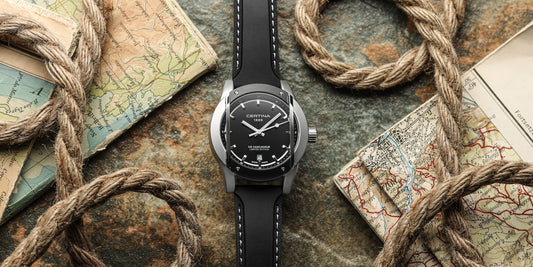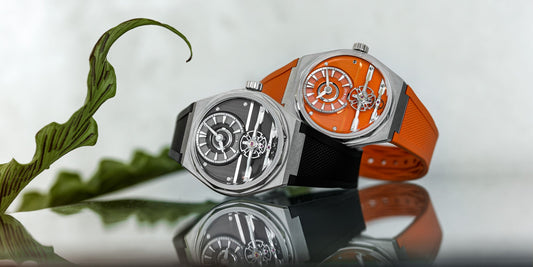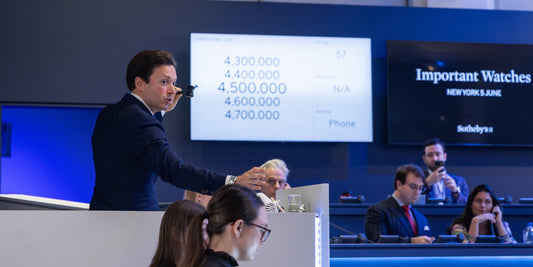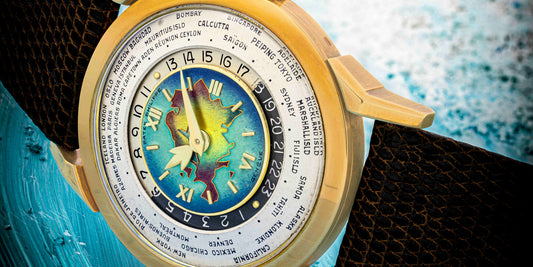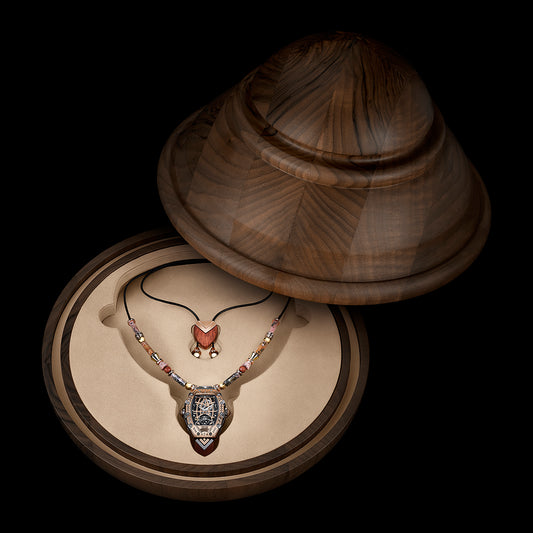One month out before the headline May Geneva auctions, April still saw some unique and highly collectable watches come up for auction, including a pocket watch from the tragic sinking of R.M.S. Titanic in 1912 that has sold in Wiltshire for just under £1.2 million.
The first self-winding automatic wristwatch made by Patek Philippe
 A historically important Patek Philippe wristwatch, Reference 2526, as the first self-winding wristwatch made by Patek Philippe. Sold by Sotheby’s for HKD 5,715,000 HKD, (approximately £582,640). © Photo courtesy of Sotheby’s.
A historically important Patek Philippe wristwatch, Reference 2526, as the first self-winding wristwatch made by Patek Philippe. Sold by Sotheby’s for HKD 5,715,000 HKD, (approximately £582,640). © Photo courtesy of Sotheby’s.
‘Arguably one of the most important vintage watches to appear on the market for many years.’
Sotheby’s cataloguing certainly highlighted the value of this Patek Philippe, Reference 2526, time-only wristwatch with an 18k yellow gold 36 mm diameter case, original enamel dial, and a later Patek Philippe bracelet. The watch was brought to auction by Sotheby’s at their Important Watches I sale on 7 April in Hong Kong.
Described as Patek Philippe's first self-winding wristwatch, fitted with a calibre: 12-600 AT automatic movement, and numbered 760'000. The watch made in 1952 has the distinction of not only being the first Reference 2526 ever made but it was also sold to renowned watch collector J.B. Champion in June 1953.
With an auction estimate of HKD 3,000,000 - 6,000,000 the watch sold for HKD 5,715,000, (approximately £582,640), including buyer’s premium.
Patek Philippe's reference 2526 wristwatch was first introduced at the Basel Fair in 1953 as Patek Philippe’s first self-winding automatic watch and was in production until 1960.
The auctioned watch had been in a private collection for the past 26 years. It was accompanied by a letter dated 27th June 1953 from Werner Sonn, the President of the Henri Stern Agency at the time. The letter confirms the provenance of the watch as being delivered to Mr Champion as well as confirming that it is the firm’s very first self-winding wristwatch. Additionally, the watch also came with a Patek Philippe Extract from the Archives confirming production of the watch in 1952 and its subsequent sale on 2 June 1953
J.B. Champion (1917 – 1975) was a US criminal defence lawyer. As noted in Sotheby’s cataloguing he purchased most of his watches from Linz Bros, a retailer in Texas and the Henri Stern Agency in New York. In 2012 Christie's sold a Patek Philippe platinum observatory watch, originally owned by Champion, for CHF 3.8 million.
Unique 1 of 1 Cartier wristwatch sells in Hong Kong
 A unique Cartier Paris "Cloche", No. 1/1 platinum wristwatch, originally made for the thematic auction 'The Magical Art of Cartier', held in 1996. Sold by Sotheby’s for HKD 1,651,000, (approximately £168,320). © Photo courtesy of Sotheby’s.
A unique Cartier Paris "Cloche", No. 1/1 platinum wristwatch, originally made for the thematic auction 'The Magical Art of Cartier', held in 1996. Sold by Sotheby’s for HKD 1,651,000, (approximately £168,320). © Photo courtesy of Sotheby’s.
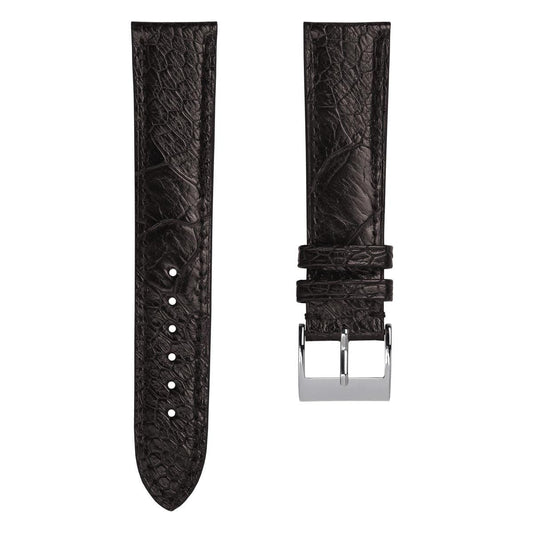
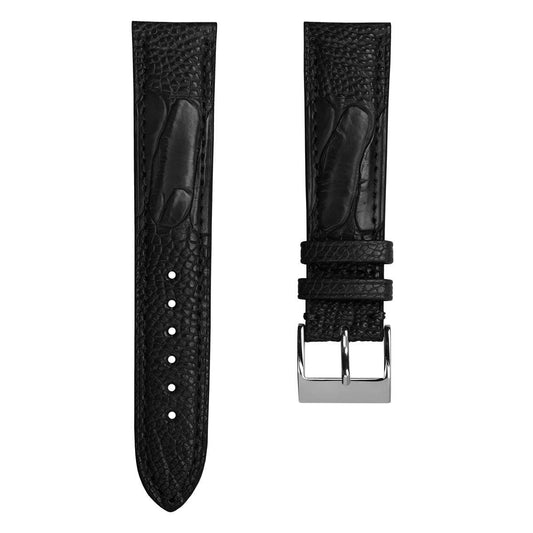
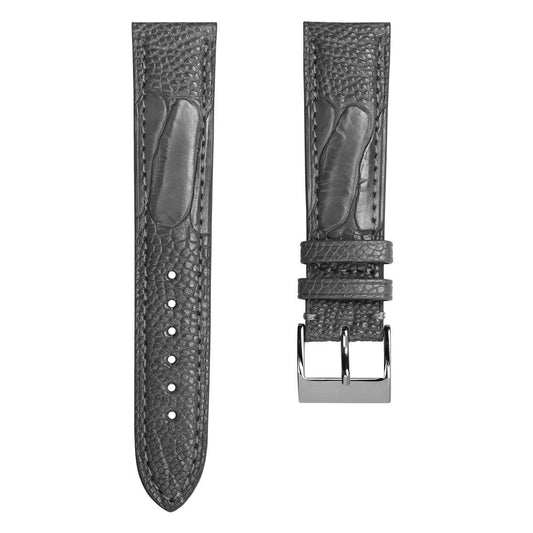
A unique Cartier Paris "Cloche", No. 1/1 platinum wristwatch, originally made for the thematic auction 'The Magical Art of Cartier', in 1996, has sold for HKD 1,651,000, (approximately £168,320), including buyer’s premium at Sotheby’s Important Watches I sale held on 7 April in Hong Kong. The highly stylised and distinctive watch had an estimate of between HKD 200,000 - 400,000.
Named “Cloche” (or bell) the watch has a silvered guilloche decorated dial with the script "Cartier Paris" surrounding the outside of the minute and hour marker chapter ring in a D shape, with blued hands. The case is in platinum and sized at 25 mm width x 33 mm in length and has the classic Cartier jewelled crown. A Cartier alligator strap is accompanied by an 18k white gold folding clasp. The watch is powered by a calibre: 9P2 mechanical movement.
As noted by Sotheby’s the original Cloche de Cartier was introduced in the 1920s as a bell-shaped jewellery piece in the form of a brooch. This unique 1996 Cartier watch version was lot 615 at Antiquorum’s 19th November 1996 thematic auction ‘The Magic Art of Cartier.’ Accordingly, the dial of this watch will remain exclusive to it, so that no other similar watch will feature the same dial design.
‘Rough Diamonds’ sparkle in Geneva
 Very rare and possibly unique 1960s Patek Philippe, Reference 3290, jewelled bracelet watch designed by Gilbert Albert. Accompanied by a matching ring and necklace. The set sold by Sotheby’s for CHF 393,700, (approximately £342,810). © Photo courtesy of Sotheby’s.
Very rare and possibly unique 1960s Patek Philippe, Reference 3290, jewelled bracelet watch designed by Gilbert Albert. Accompanied by a matching ring and necklace. The set sold by Sotheby’s for CHF 393,700, (approximately £342,810). © Photo courtesy of Sotheby’s.
In April at the same time as Watches and Wonders was running in Geneva, Sotheby’s in collaboration with creative watch collective heist-out conducted a thematic auction to celebrate exceptional bejewelled and embellished avant-garde vintage and neo-vintage timepieces. The aim of the auction was to bring out of obscurity some of these unconventional but important designer timepieces. Titled ‘Rough Diamonds’ the live auction on 11 April 2024 was held in a subterranean wine cellar in Geneva with all 24 lots selling in under one hour at the evening event.
Top lot went to a possibly unique Patek Philippe, Reference 3290, jewelled bracelet watch, sold as part of a matching set also including a ring and a necklace all designed in 1962 by Gilbert Albert. Each piece in the set has been created in yellow gold, decorated with enamel, and set with pearls. The set is accompanied by a Patek Philippe Certificate of Origin and presentation case.
Against an estimate of CHF 30,000 - 50,000 the set sold for CHF 393,700, (approximately £342,810), including buyer’s premium. Nearly eight times the high estimate.
Swiss jeweller and designer Gilbert Albert (b.1930) has won numerous design awards and has worked with both Patek Philippe and Omega as well as establishing his own Atelier. His awards have included winning prestigious prizes at the ‘The Diamonds International Awards’ in New York and ‘Montres et Bijoux’ in Geneva.
Commenting on the sale Josh Pullan, Global Head of Sotheby’s Luxury Division noted.
“The fact that the Gilbert Albert designed Patek Philippe – the most idiosyncratic and extravagant lot in the sale – has become the most valuable lot sold tonight, proves that there is a definite appetite amongst buyers for non-conformist, and boldly eccentric timepieces, presented in a differentiated context.”
Gérald Genta designed Audemars Piguet watch - but not a Royal Oak
 Highly distinctive a Gérald Genta designed Audemars Piguet, Reference. 5587BC, ‘Cobra’ made in 1985 with an 18k white gold integrated bracelet. Sold by Sotheby’s for CHF 165,100, (approximately £144,730). © Photo courtesy of Sotheby’s.
Highly distinctive a Gérald Genta designed Audemars Piguet, Reference. 5587BC, ‘Cobra’ made in 1985 with an 18k white gold integrated bracelet. Sold by Sotheby’s for CHF 165,100, (approximately £144,730). © Photo courtesy of Sotheby’s.
Legendary watch designer Gérald Genta (1931-2011) needs little introduction. He is perhaps most famed for the design concepts that lead to the creation of the Audemars Piguet, Royal Oak launched in 1972 and the Patek Philippe, Nautilus from 1976. Genta is widely credited with creating the modern luxury sports watch category.
His design work for Audemars Piguet however wasn’t just limited to the Royal Oak. Another wristwatch designed by Gérald Genta was the Audemars Piguet, Reference. 5403, the so called ‘Cobra,’ released in 1971. The watch features the all-important integrated bracelet so much associated with Genta. In this case the bracelet wraps itself around the dial and is crafted from gold in an intricate but very bold stylish mesh-like pattern. As Sotheby’s note the mesh pattern resembles the scales of a snake hence the name given to the watch, ‘Cobra.’ Additionally, the watch has a very sleek profile on the wrist and was equipped with a thin in-house automatic movement.
This particular watch is an Audemars Piguet, Reference. 5587BC, ‘Cobra’ 'Royal Khanjar', made in 1985. With a blue dial and a day and date complication displayed via two sub dials at 3 and 9 o'clock. The slender hour markers on the dial are crafted from 18k white gold. The case is 18k white gold with a snap-on case back with integrated bracelet also crafted from 18k white gold with a locking clasp. An Audemars Piguet ultra-thin automatic day-date Calibre: 2124 movement powers the watch. The overall case size is 34.2 mm in diameter and the bracelet circumference approximately 185 mm.
The watch case back carries the stamp in red of the Khanjar crest, emblem of the Omani Royal Family. Accompaniments include an Audemars Piguet Digital Extract from the Archives and instruction manual.
Sold at auction by Sotheby’s in collaboration with creative watch collective heist-out at the ‘Rough Diamonds’ live auction on 11 April 2024 in Geneva. The watch was estimated at between CHF 50,000 - 100,000 and achieved CHF 165,100, (approximately £144,730), including buyer’s premium.
Mid-size 70s sophistication in steel and gold
 Rare and elegant Vacheron Constantin ‘222’ model, Reference. 46003/411 with a ‘mid-size’ 34mm diameter case from circa 1983. Sold by Christie’s for USD 22,680, (approximately £18,150). © Photo courtesy of Christie's Images Ltd. 2024.
Rare and elegant Vacheron Constantin ‘222’ model, Reference. 46003/411 with a ‘mid-size’ 34mm diameter case from circa 1983. Sold by Christie’s for USD 22,680, (approximately £18,150). © Photo courtesy of Christie's Images Ltd. 2024.
Now recognised alongside the Audemars Piguet, Royal Oak and the Patek Philippe, Nautilus as an iconic 70s designed luxury sports watch, Vacheron Constantin’s sophisticated and stylish ‘222’ model was launched in 1977. Designed by Jörg Hysek the model was produced to celebrate the 222nd anniversary of Vacheron Constantin’s foundation in 1755. The watch is probably best known for the ‘Jumbo’ sized Reference 44018 with a 37 mm diameter case. However, the automatic version of the watch also came in a 34mm diameter ‘mid-size’ case version, Reference 46003.
One of the key design aspects of the watch is its integrated bracelet, the manufacture of which was undertaken by renowned bracelet maker Gay Frères, who also made watch bracelets for Rolex, Patek Philippe and Heuer.
The original model ‘222’ was discontinued in 1984 but was notably reintroduced again as part of Vacheron Constantin’s current ‘Historiques’ collection and is referred to as ‘Historiques 222’ crafted in yellow gold and sized at 37mm case diameter.
The watch featured in this report is the mid-size Reference. 46003/411 ‘222’ with a 34mm diameter case from circa 1983. Auctioned by Christie’s at their Watches Online: The Dubai Edit ending 30 April. Christie’s catalogued that only about 1,000 pieces of the mid-size model were made making this example in steel and gold a rare piece. The slim monocoque case with a flat case back is formed from stainless steel with an 18k yellow gold scalloped bezel and gold Vacheron Constantin Maltese Cross insignia on the case near 5 o’ clock. With a slate grey ‘sigma’ dial and applied gold indices. The integrated stainless-steel bracelet has 18k yellow gold elongated hexagonal central links with a folding clasp. Powered by a thin profile Calibre. 1124, automatic self-winding movement based on the Jaeger-LeCoultre Calibre. 889.
Sold for USD 22,680, (approximately £18,150), including buyer’s premium. The estimate was USD 20,000 - USD 40,000.
Pocket Watch from the tragic sinking of Titanic sells for just under £1.2 million


From the tragedy of the R.M.S. Titanic sinking on 15 April 1912 a 14k gold Waltham pocket watch originally belonging to John Jacob Astor IV who perished during the sinking. Sold by Henry Aldridge & Son Ltd for £1.175 million. © Photos courtesy of Henry Aldridge & Son Ltd.
A 14k gold, 17 jewel, Waltham pocket watch originally belonging to John Jacob Astor IV (1864 – 15 April 1912) who perished during the sinking of R.M.S Titanic in the early hours of 15 April 1912 has sold at auction for £1.175 million including buyer’s premium at Henry Aldridge & Son Ltd in Devizes, Wiltshire. The estimate for the pocket watch was between £100,000 - 150,000.
Henry Aldridge & Son Ltd are internationally recognised as leading specialist auctioneers in Titanic and White Star Memorabilia. The sale of the pocket watch was at their auction of Titanic, White Star and Transport Memorabilia held on 27 April. Previously the auction house has achieved record prices for other R.M.S. Titanic memorabilia including £1.1 million for the Wallace Hartley Violin and a 32ft long R.M.S Titanic enquiry plan achieved £220,000.
As the auction house catalogued, John Jacob Astor IV was an American business magnate and a prominent member of the Astor family. He was one of the wealthiest passengers aboard the R.M.S. Titanic on its maiden voyage across the Atlantic from Southampton to New York. In the evening of 14 April 1912 Titanic hit an iceberg and began to sink. Accordingly, as the passengers started to take to the lifeboats Astor helped his wife, Madeleine, into a lifeboat. Asking if he could join his wife he was told that only women and children would be taken onto the lifeboats first. Astor was last seen smoking a cigarette with author Jacques Futrelle. Both he and Futrelle perished during the sinking of the ocean liner along with around 1500 passengers and crew in the fateful early hours of 15 April 1912.
John Jacob Astor IV's body was later recovered by the steamer C.S MacKay-Bennett on April 22, not far from the sinking. He was identified by the initials sewn on the lapel of his jacket. His recovered effects from his clothes included the gold Waltham pocket watch engraved on the case ‘JJA’.
The auctioned pocket watch came with a signed affidavit from William Dobbyn IV’s daughter-in-law stating that the pocket watch was a gift to William Dobbyn’s son (William Dobbyn V) from Vincent Astor, (son of John Jacob Astor IV). William Dobbyn IV was John Jacob Astor IV, executive secretary and continued as Vincent Astor’s secretary. The affidavit states that the pocket watch was completely restored after being returned to the Astor family and worn by Vincent Astor.
Henry Aldridge & Son Ltd noted that the pocket watch is featured in a book relating to Titanic memorabilia titled ‘Titanic Fortune and Fate’ by Mariners' Museum and published by Simon & Schuster Ltd in 1998. The watch has also been on display at the Mariners Museum (New York), Blackhawk Museum (Danville, California), Ronald Reagan Presidential Library, and the National Geographic Exhibition (Washington DC) and the Titanic Museum.
Banner © Photo courtesy of Sotheby’s.






